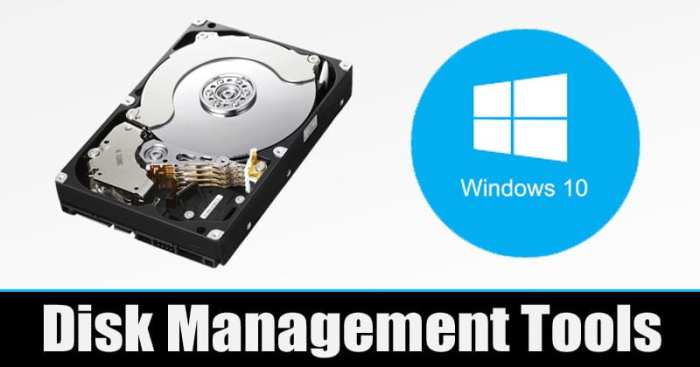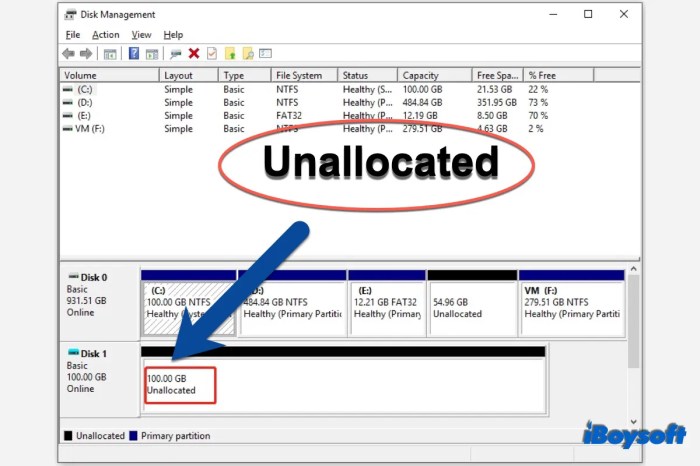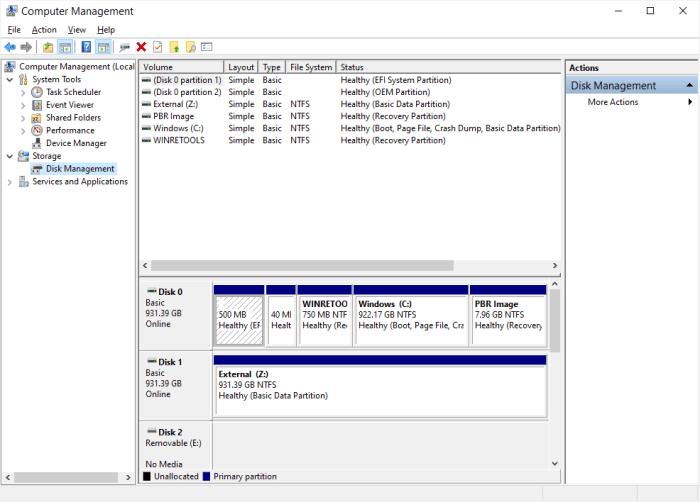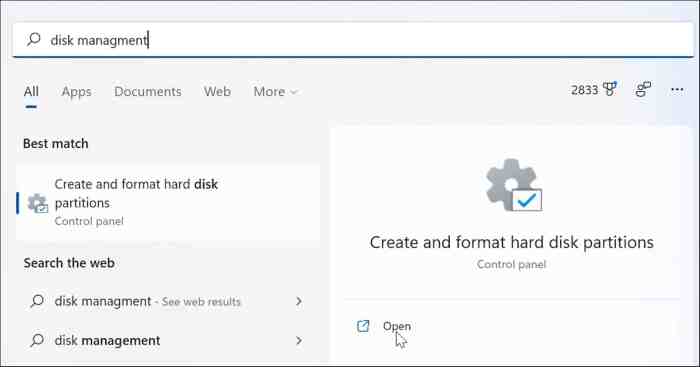Lab 5-3 using various disk management tools – Embark on a journey into the realm of disk management as we delve into Lab 5-3, where a plethora of tools await to empower your understanding of data storage and organization. This exploration promises to unveil the intricacies of disk partitioning, formatting, file systems, volume management, and performance optimization, equipping you with the knowledge to harness the full potential of your storage devices.
Prepare to navigate through a labyrinth of concepts, unraveling the mysteries of disk management and emerging as a master of data organization. The insights gained from this comprehensive guide will serve as an invaluable asset in your pursuit of data management excellence.
Disk Management Tools Overview
Disk management tools are essential for managing and maintaining storage devices. They provide a comprehensive set of features for partitioning, formatting, and managing disk drives, making them indispensable for system administrators and IT professionals.
Common disk management tools include:
- Disk Management (Windows)
- Disk Utility (macOS)
- fdisk (Linux)
- GParted
- Acronis Disk Director
Benefits of using disk management tools:
- Efficient disk space management
- Improved disk performance
- Enhanced data security
- Simplified system maintenance
Lab 5-3: Using Various Disk Management Tools
Objectives of Lab 5-3:
- Familiarize with disk management tools
- Learn to partition and format disk drives
- Understand file system concepts
- Apply volume management techniques
Steps involved in completing Lab 5-3:
- Install and configure a disk management tool
- Partition and format a disk drive
- Create and manage file systems
- Implement volume management techniques
- Analyze and interpret results
- Enhanced understanding of disk management tools
- Practical experience in partitioning, formatting, and managing disk drives
- Improved ability to optimize disk performance and storage utilization
- Primary partition
- Extended partition
- Logical partition
- FAT32
- NTFS
- ext4
- XFS
- RAID
- LVM
- ZFS
- Increased storage capacity
- Improved data redundancy and fault tolerance
- Enhanced performance
- Disk type (HDD/SSD)
- Disk speed (RPM/IOPS)
- File system
- Disk fragmentation
- Using SSDs
- Choosing an appropriate file system
- Defragmenting disks
- Implementing RAID
- Using performance monitoring tools
- Analyzing disk performance metrics
- Identifying and resolving bottlenecks
Results obtained from Lab 5-3:
Disk Partitioning and Formatting

Disk partitioning involves dividing a physical disk drive into multiple logical partitions. This allows for efficient storage management, data isolation, and improved performance.
Types of disk partitions:
Formatting a disk partition prepares it for use by creating a file system that organizes and manages data on the partition.
File Systems: Lab 5-3 Using Various Disk Management Tools

File systems provide a structured way of storing and organizing data on a disk drive. They define how data is stored, retrieved, and managed.
Types of file systems:
Advantages and disadvantages of each file system:
| File System | Advantages | Disadvantages |
|---|---|---|
| FAT32 | Widely supported, compatible with older systems | Limited file size (4GB), less efficient for large files |
| NTFS | Advanced features, improved security, supports large file sizes | More complex, less compatible with older systems |
| ext4 | Efficient, reliable, supports large file sizes | Limited compatibility with non-Linux systems |
| XFS | High performance, scalable, supports very large file sizes | Limited support in some environments |
Volume Management

Volume management techniques allow for the creation and management of logical volumes that span multiple physical disk drives. This provides flexibility and improved storage utilization.
Types of volume management techniques:
Benefits of using volume management techniques:
Disk Performance Optimization

Factors affecting disk performance:
Techniques for optimizing disk performance:
Monitoring and troubleshooting disk performance issues:
Expert Answers
What is the primary objective of Lab 5-3?
Lab 5-3 aims to provide a hands-on understanding of various disk management tools, enabling learners to explore the concepts of partitioning, formatting, file systems, and volume management.
How does disk partitioning contribute to data management?
Disk partitioning allows for the logical division of a physical storage device into multiple sections, enhancing organization and facilitating the management of different file systems and data types.
What are the key factors to consider when selecting a file system?
The choice of file system depends on factors such as compatibility, performance requirements, data integrity needs, and the specific operating system being used.
